I remember when I first fell in love with kayaking – when I first reached out and grasped a paddle. In those days, I was a small and skinny child who barely had enough upper body strength to push myself along.
Throughout the next few years, I found myself paddling across the open ocean with my friends and family.
Sometimes, I went on trips through youth summer camps. Sometimes, I traveled with my family to places like the Hand Islands and the Broken Islands.
I was often the last one in the group, struggling to keep up with the rest of the pack. But even when I was falling behind, I always loved the experience of kayaking across open water.
One thing I realized very quickly, however, is that your paddles matter, and learning how to size your kayak paddle is of crucial importance.
Why is kayak paddles’ size important?
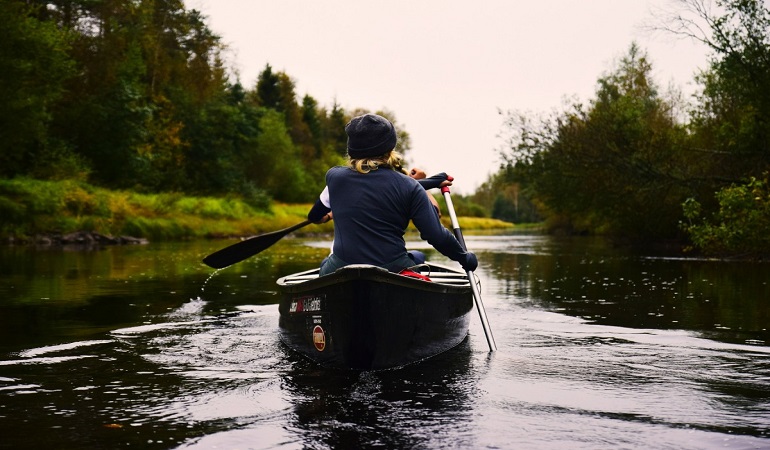
It might seem like just a normal piece of plastic, but your paddle will be firmly in your hands for the entire journey. You’ll get to know your paddle quite well – especially if you plan to go on multi-day kayaking trips.
I could talk for hours about how to avoid getting blisters on your hands and what kind of gloves you should wear. But perhaps the most important thing to remember is the proper way to size a kayak paddle.
Pick the right length, and you’ll be on your way to an enjoyable kayaking trip. But what length do you need?
We’re glad you asked…
What Paddle Length Should I Get?
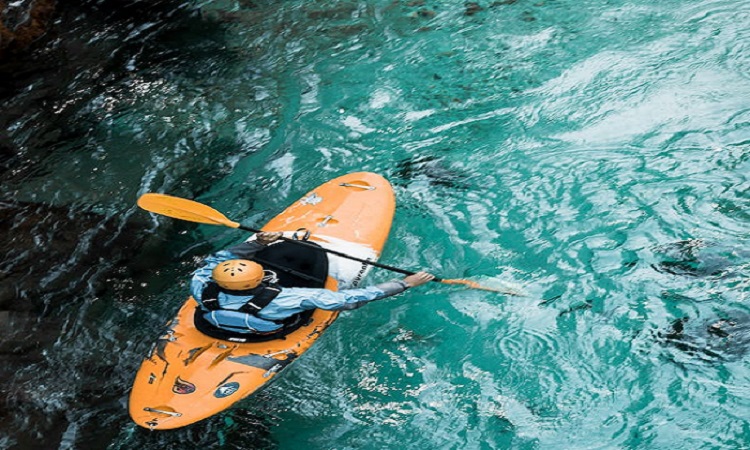
In order to determine your ideal kayak length, you’ll need to keep a number of factors in mind:
Your Personality/Goals
First of all, you’ll need to consider what you hope to accomplish with kayaking as a hobby. Are you the type of person who wants to go as fast as possible? Are you a serious athlete? If this is the case, you might want to opt for a slightly smaller paddle
Smaller kayak paddles are best for aggressive, forward, true high-angle paddling.
On the other hand, you might be interested in kayaking because of your love for nature and enjoying the slow and steady experience of floating across the water. If you’re looking for a more relaxed experience, you might want to reach for longer kayak paddles.
Longer paddles are great for a slow, casual paddling pace and a true low-angle paddling style that is almost horizontal.
You can see these differences for yourself if you watch kayakers in action. Some people barely even dip their paddles in the water, using extremely light, horizontal strokes. At the same time, some are driven to achieve high speeds and give themselves a genuine workout.
These individuals thrust their paddles into the water at an almost vertical angle to give themselves as much forward motion as possible.
Consider Your Height
You’ll also need to consider your torso height when choosing paddle length. People with body measurements around six feet or higher will likely need to reach for a lengthier paddle. The reasoning is simple: These paddles better match the proportions of taller people.
In contrast, people shorter than a foot will likely need to reach for shorter paddles. These individuals will find shorter shaft paddles easier to handle and move.
When considering height, you also need to consider your seating position. Some kayak seats put you below shoulder level. This might mean that even a tall individual would end up relatively low when they sit in the water.
In this situation, they might need to reach for a shorter paddle even though they’re tall outside the kayak. The same logic applies for higher seating positions – but in reverse.
You also have the option of kid-friendly kayak paddles for your little ones!
What Kayak Category is Right for Me?

Of course, you’ll need to choose your kayak before you choose your paddle. It doesn’t really make sense trying to choose a kayak based on your paddle when it should be the other way around.
You can choose your kayak based on what kinds of aquatic activities interest you most:
Extended Ocean
TripsIf you’re planning extended, multi-day trips across the open ocean, you’ll need a best touring kayak or comfortable recreational kayak. They are specifically designed for the sea and provide a ton of storage space for tents, food, and other gear.
Lakes and Rivers
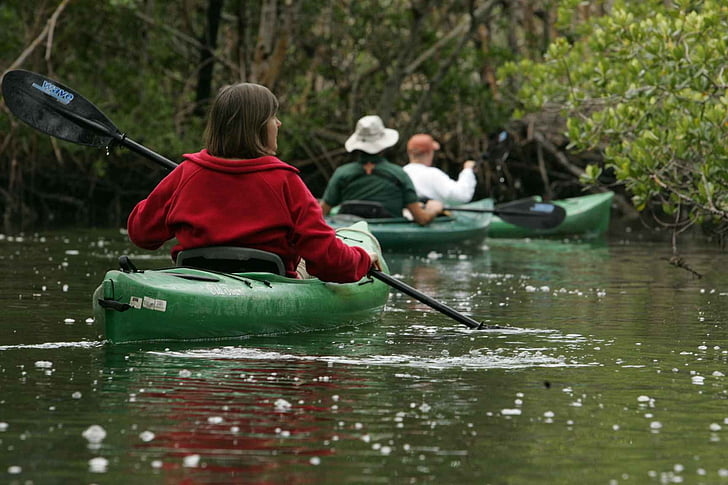
If you’re looking for a well-rounded one that can handle pretty much anything, you should opt for a recreational kayak with a flat bottom. That being said, recreational kayaks are best-suited to lakes and calm rivers.
Whitewater
This might sound obvious, but a comfortable whitewater kayak is best-suited to whitewater conditions. These are built for rapid-moving rivers and provide solid performance, enhanced with whitewater paddles.
Does Kayak Width Matter?
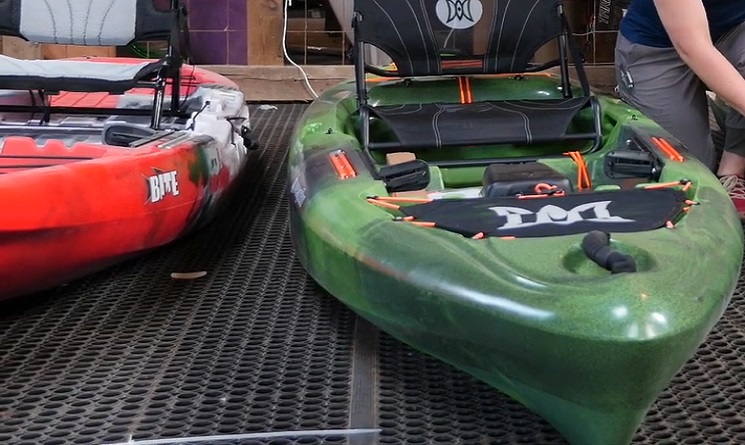
So why did we spend so much time talking about the different types of stock boat models if this is an article about paddles?
Simple!
You need to consider your kayak’s width when choosing your touring paddles. And yes, the three aforementioned types have different widths.
A touring kayak is quite narrow, with a boat width of 22 to 25 inches. Performance kayaks have an abnormally narrow boat width, with widths between 19 and 22 inches. Recreational kayaks are a little wider (despite being shorter). These may be between 26 and 30 inches wide.
While there are many different types of whitewater kayaks, they generally have a boat width of about 25 inches.
If your kayak is narrower, you can get away with using a shorter paddle. If your kayak is on the wider side, you will need to use a longer paddle.
This is because longer paddles can reach beyond the kayak width, while shorter paddles can easily touch the water when you’re in a narrower kayak.
Why Does the Size of Your Kayak Paddle Matter?

But does it really matter if you choose a paddle that is too long or too short? Is it going to be something you actually notice on the water?
It really depends.
If you’re kayaking in a very casual manner and you’re only going out for a few hours at a time, you probably won’t notice the difference between a slightly shorter paddle and a somewhat longer paddle.
But what if you plan to go on multi-day kayaking trips across the ocean?
Well, you might start noticing all the uncomfortable little details about your paddle during long periods – especially after the fifth or sixth hour on the ocean.
At the end of the day, there are a few reasons you need a kayak paddle size guide:
First, you may experience discomfort after using an incorrectly sized kayak paddle. The last thing you want is sore hands, a sore back, and sore arms from paddling. The worst is when your knuckles slap against the side of the boat because your paddle is too short.
Next, you may experience a lack of control over your boat if you use the wrong kayak paddle length.
Finally, you might get discouraged about kayaking if you’re a newbie using the wrong paddle sizes. The last thing you need is a bad first experience that turns you off the entire sport.
Kayak Paddle Sizing Guide
Here’s a kayak paddle size chart to help you visualize precisely what you need:
Kayak Paddle Sizing:
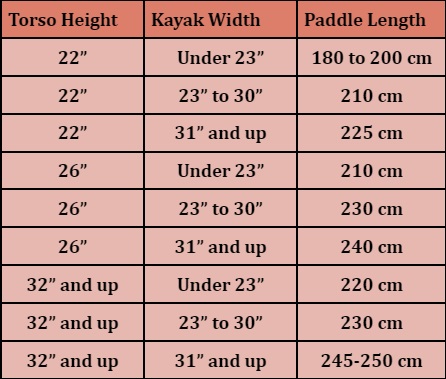
If you are aiming for a more relaxed kayaking experience, add 5 cm to the result for your paddle shaft. If you’re looking for a more aggressive, high-paced kayaking experience, consider subtracting 5 cm from the result.
How Do I Know Which Blade Shape to Choose?
When choosing your best kayak paddle, you’ll also need to consider several factors like your paddle blade shape and paddle size.
Choose paddles for low-angle paddling if you’re aiming for a more relaxed experience. High-angle paddles are great if you want more aggressive, powerful paddling.
Asymmetrical paddle blades provide a more uniform pushing action, and most modern kayak fiberglass blades are asymmetrical. Touring paddles are great for slow-moving waters, while feathered paddles reduce the wind-related drag and align your paddles to not be on the same plane.
Most fiberglass shafts today are also dihedral, meaning they have a rib down the center that stops the blade from fluttering in the water. Narrower paddle shafts are lighter and easier to handle, making them more enjoyable during long trips.
Wider paddle blades are heavier but give you more power and faster acceleration.
These are just a few things to remember when choosing your blade design.
Why Many Paddlers Choose Extendable Paddles

Last but not least, I think it’s worth mentioning that some paddles can be extended or shortened depending on your preferences.
So at the end of the day, choosing the ideal size might not be a huge issue if you opt for extendable paddles that can be adjusted.
Soon enough, you’ll be zig-zagging through water and focusing on other subjects – like how to store a kayak or how to tie it to the roof rack.
Grab Your Ideal Kayak Paddles Today!
I’m sure by now you know enough about critical factors related to the paddle design, like the best paddle length, high-angle or low-angle paddle, and narrower or wider blade to help you choose your perfect paddle.
Enough talk – it’s time to grab your paddle, hop in a kayak, and enjoy this fantastic sport. If you give it time, I’m sure you’ll fall in love with kayaking just as I did all those years ago.
0 Comments